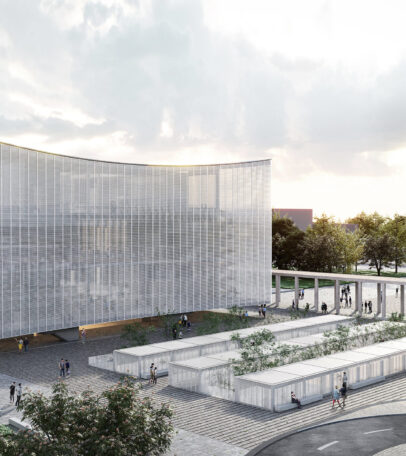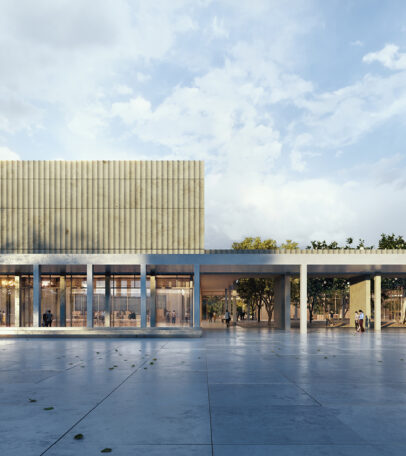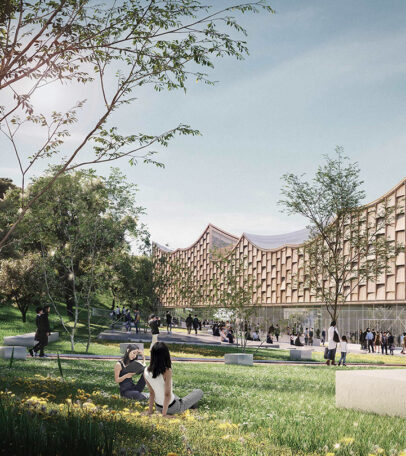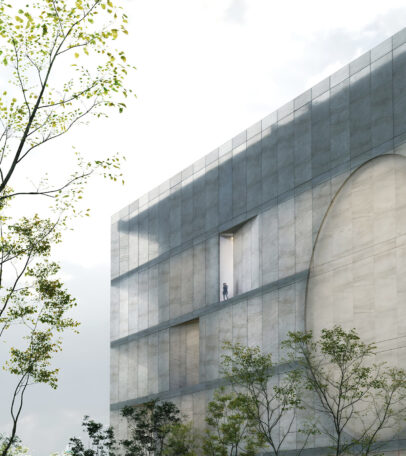Jinju National Museum
Cultural · Jinju, KR
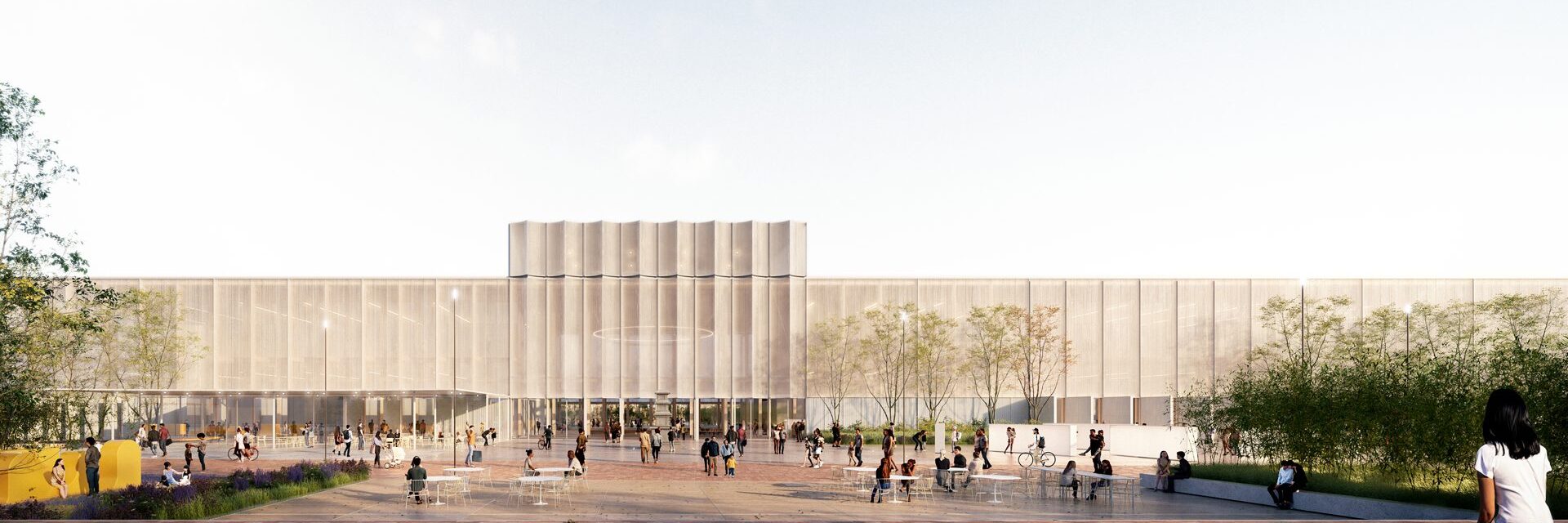
FIRST PLACE INTERNATIONAL DESIGN COMPETITION
Jinju’s architectural heritage is the result of its historical commitment to the territory, evident in the tangible integration of its architecture with the city’s natural environment. The New National Museum continues this noble tradition by forging a close relationship between the museum and its immediate surroundings, thus creating a seamless experience between the programmatic offerings inside and outside the museum. The connection between them is established through two longitudinal circulation galleries that act as natural light filters and a climate control system.
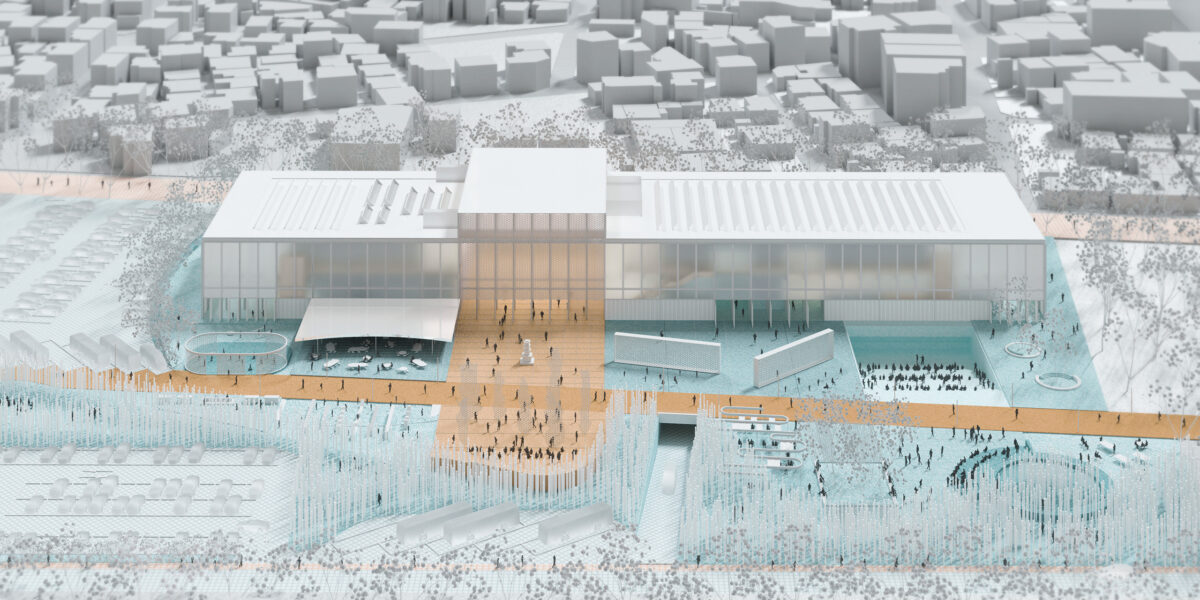
The program offerings flow freely from site to building and vice versa while the museum’s interior, using wood as its main materiality, delivers a warm, inviting and sustainable space. Both environments, indoors and outdoors, are connected through two continuous galleries that function both, as a threshold and a filter. These gallery spaces serve multiple purposes acting as (a) circulation arteries, (b) natural light filtering devices and (c) passive
climate control systems.
The symbiotic relationship created between indoor and outdoor program spaces, will be additionally sustained by the following design propositions:
(a) A museum designed as a communication and interaction tool for the citizens of Jinju and visitors alike. By bringing people together around different program offerings both indoors and outdoors.
(b) A museum designed to be representative of the architecture of Jinju, utilizing traditional materials in new ways and reflecting the city’s rich cultural heritage and its unique blend of historical and cultural influences.
(c) A museum designed to blend the indoors and the outdoors filtering natural light through the museum spaces without compromising the displays and exhibition areas.
(d) A museum designed to be highly efficient and intuitive for the
user. Through a clear, concise program allocation the plan flows from the Welcome Center.
Overall, our proposal attempts to actively assist visitors in reconsidering their relationship to nature, to the built environment and to each other by generating a meaningful and engaging museum Inside Out & Outside In experience.


The site strategy for the New Jinju National Museum is organized around four core operations [figure 01]:
(a) The Museum’s Orientation. Tilting the building’s footprint (α) allows the building to establish a decisive presence within the site gaining a degree
of formal independence from its boundaries, while creating an ample entry plaza and generating a vibrant relationship with all site amenities.
(b) Restoring the platform. The restored old train platform becomes the main circulation north-south artery for the complex stitching together site amenities and museum program activities.
(c) Program Band Activation. A series of programmatic bands activate the site trough different program offerings such as the outside exhibition, the auditorium or the pond.
(d) A defined green barrier. A bamboo forest establishes a defined green perimeter which provides a visual and acoustic barrier from the vehicular parking and delivery access areas.
Additionally, the bamboo forest creates a subtle delineation of the newly created activity areas within the site.
These operations work together with the building’s design strategies to create a comprehensive whole. The building is anchored in the following
core strategic moves:
(1) The creation of two north south strategic bands (A+B) connect the site (B) with the museum’s program offerings (A). These bands act as circulation arteries, filter and tame the natural light into the museum and provides the possibility for passive climate control opportunities.
(2) Efficient and intuitive program organization. The program of the building is easy conceived and organized around the Welcome Center with the main exhibition areas in the north and the educational spaces / children’s museum to the south.
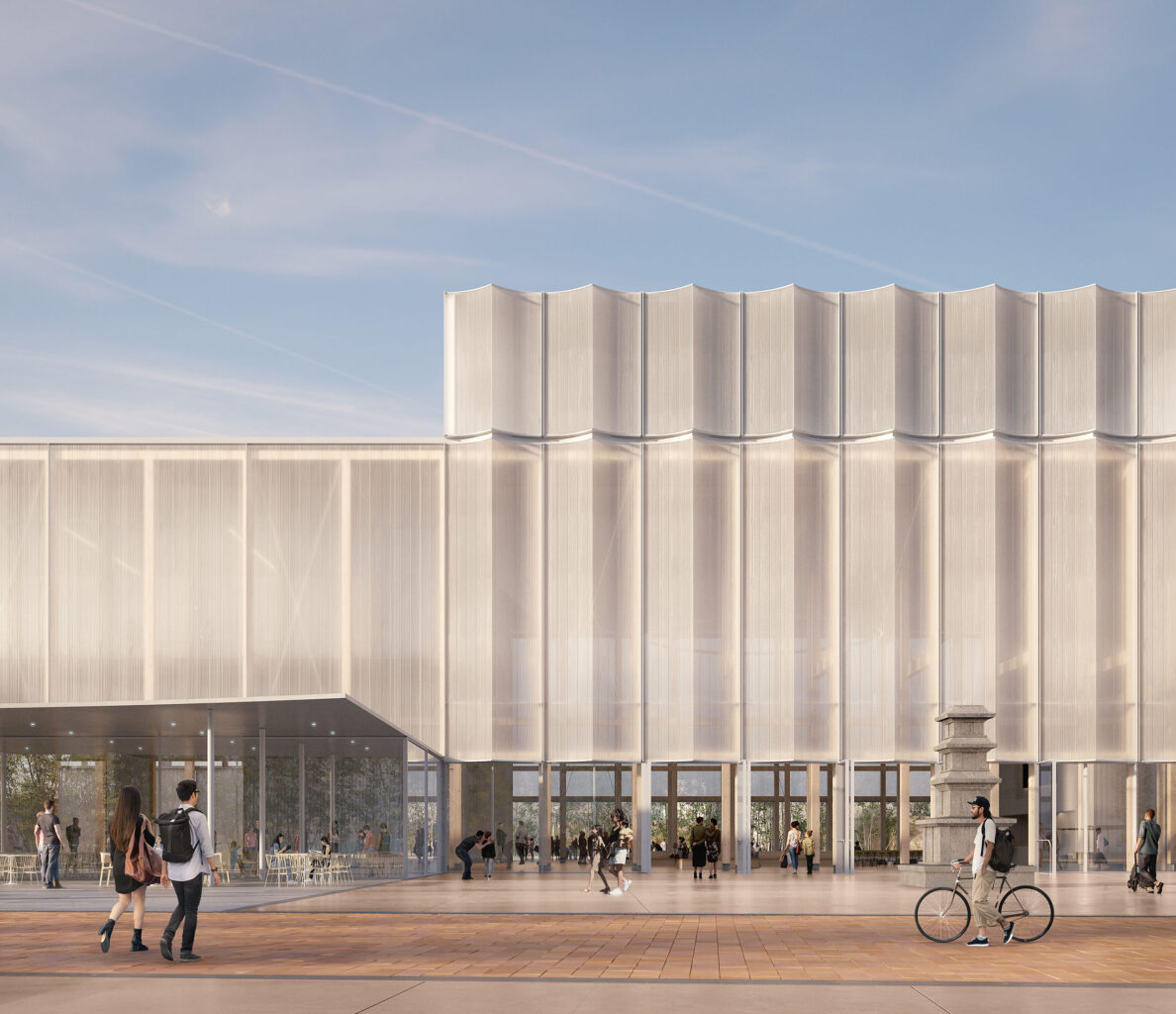
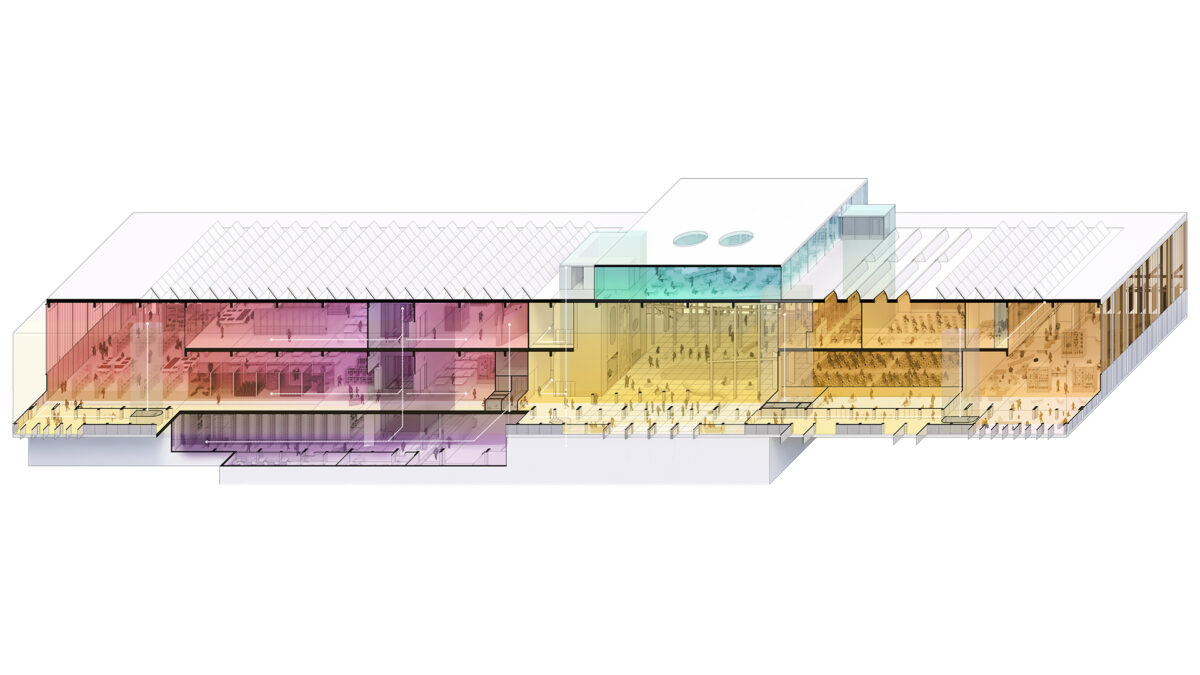
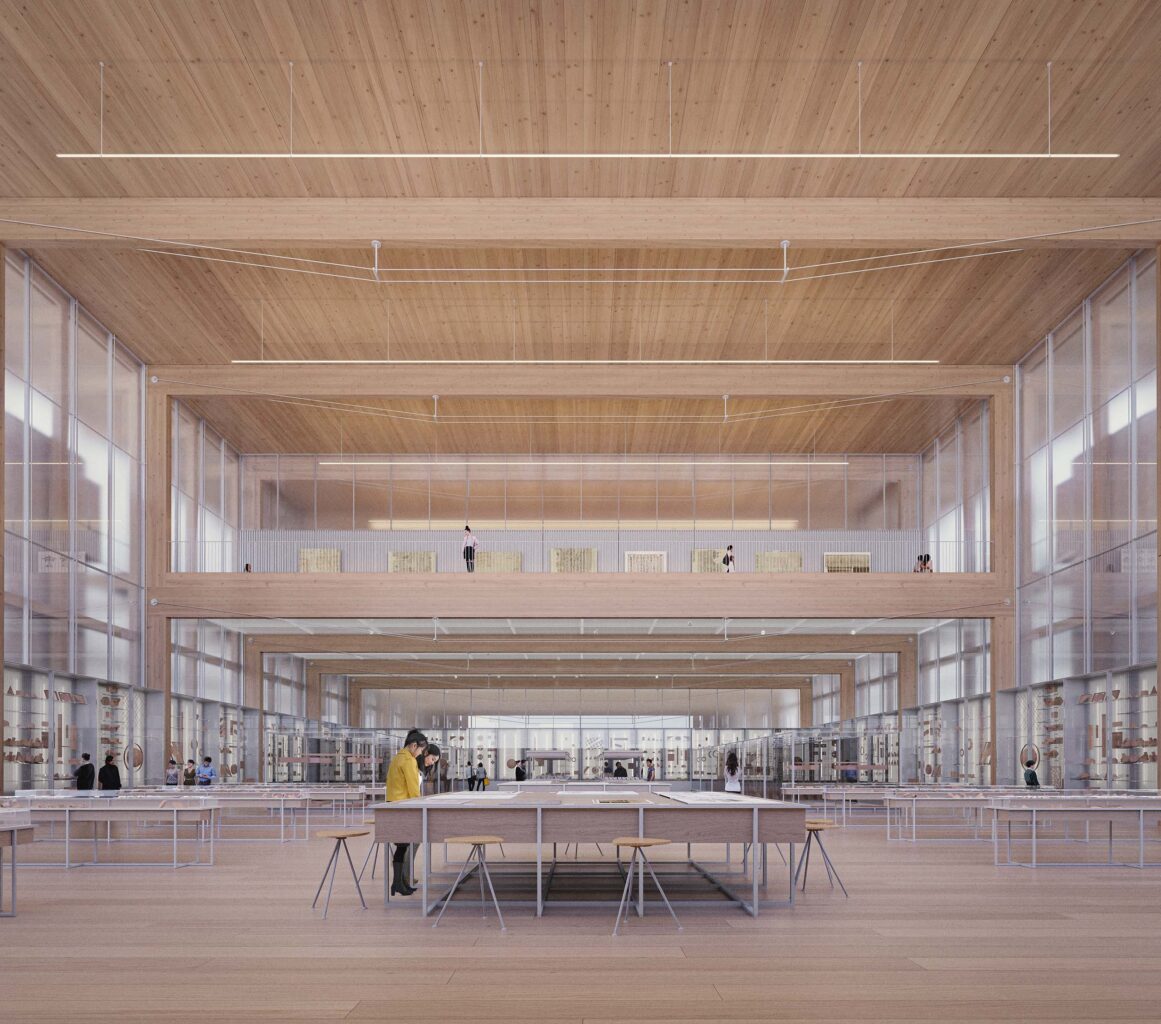
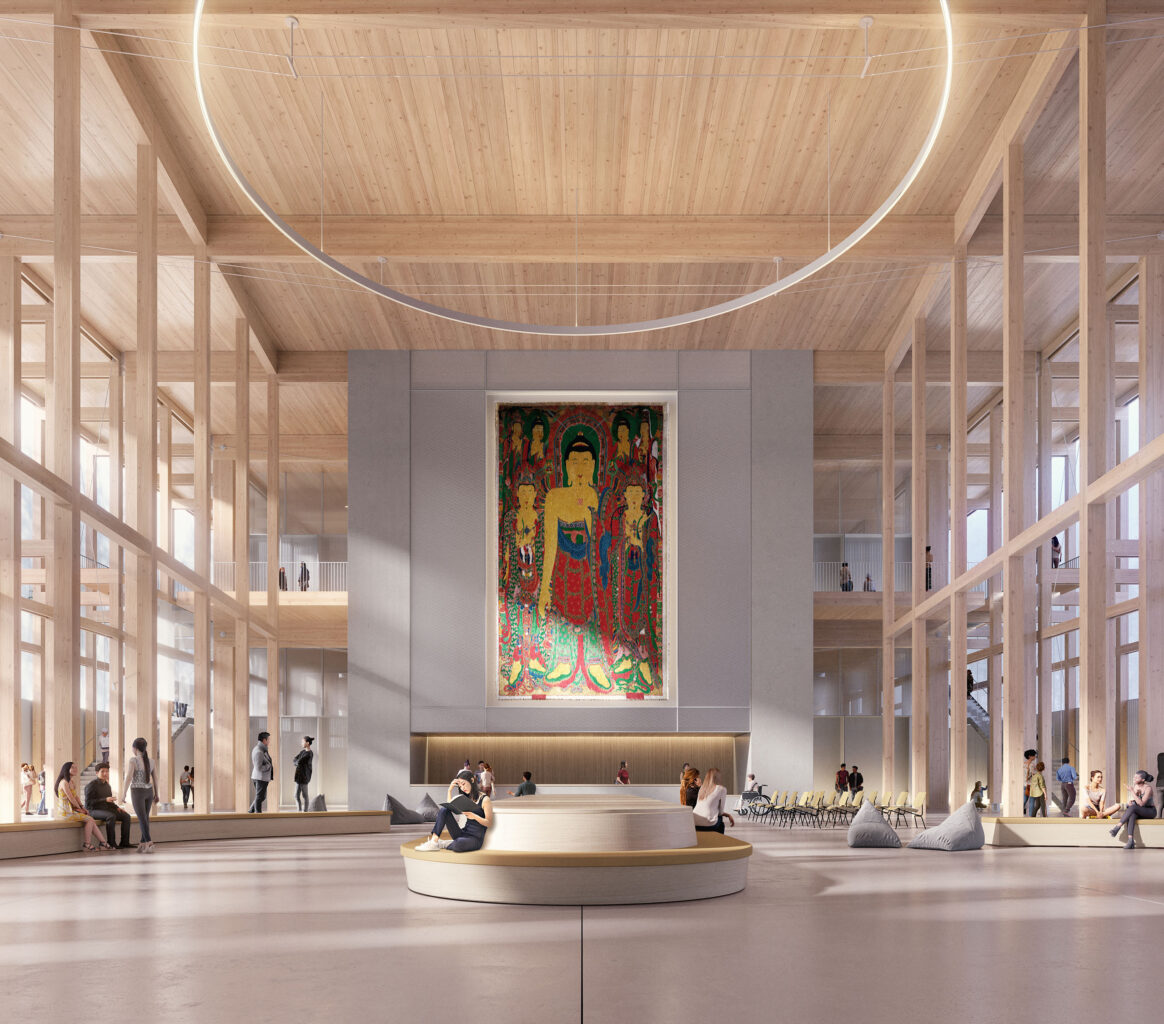
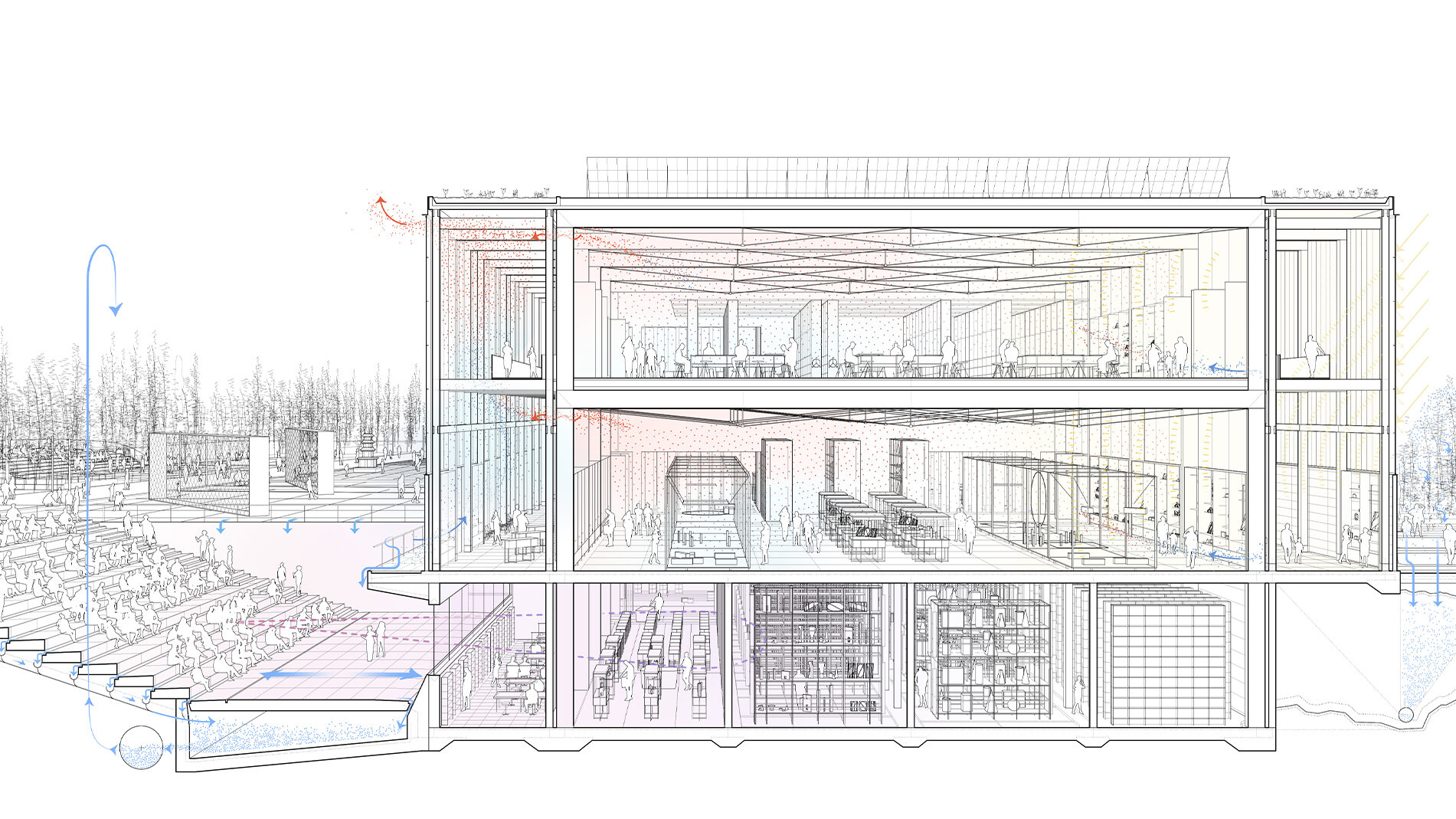
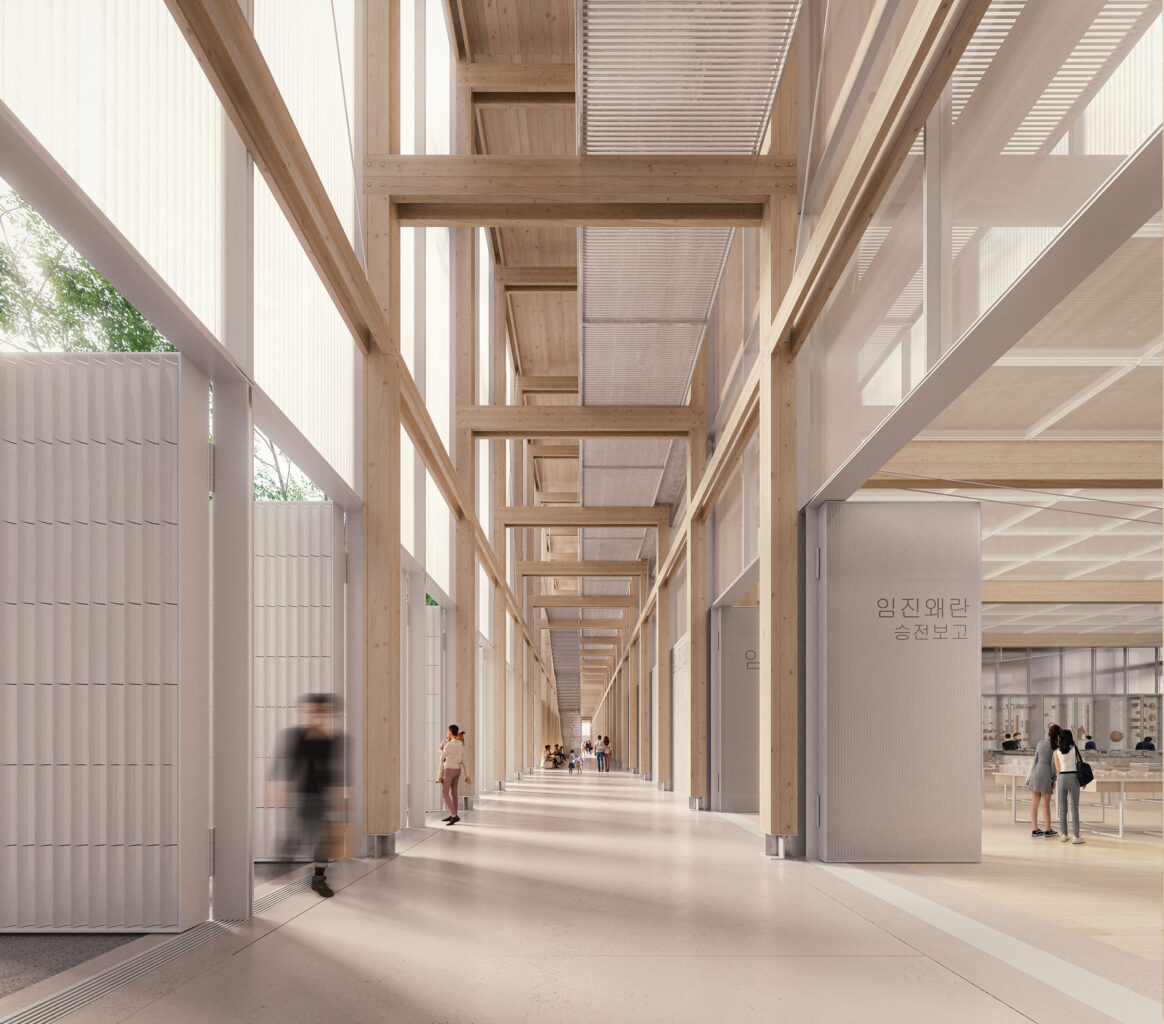
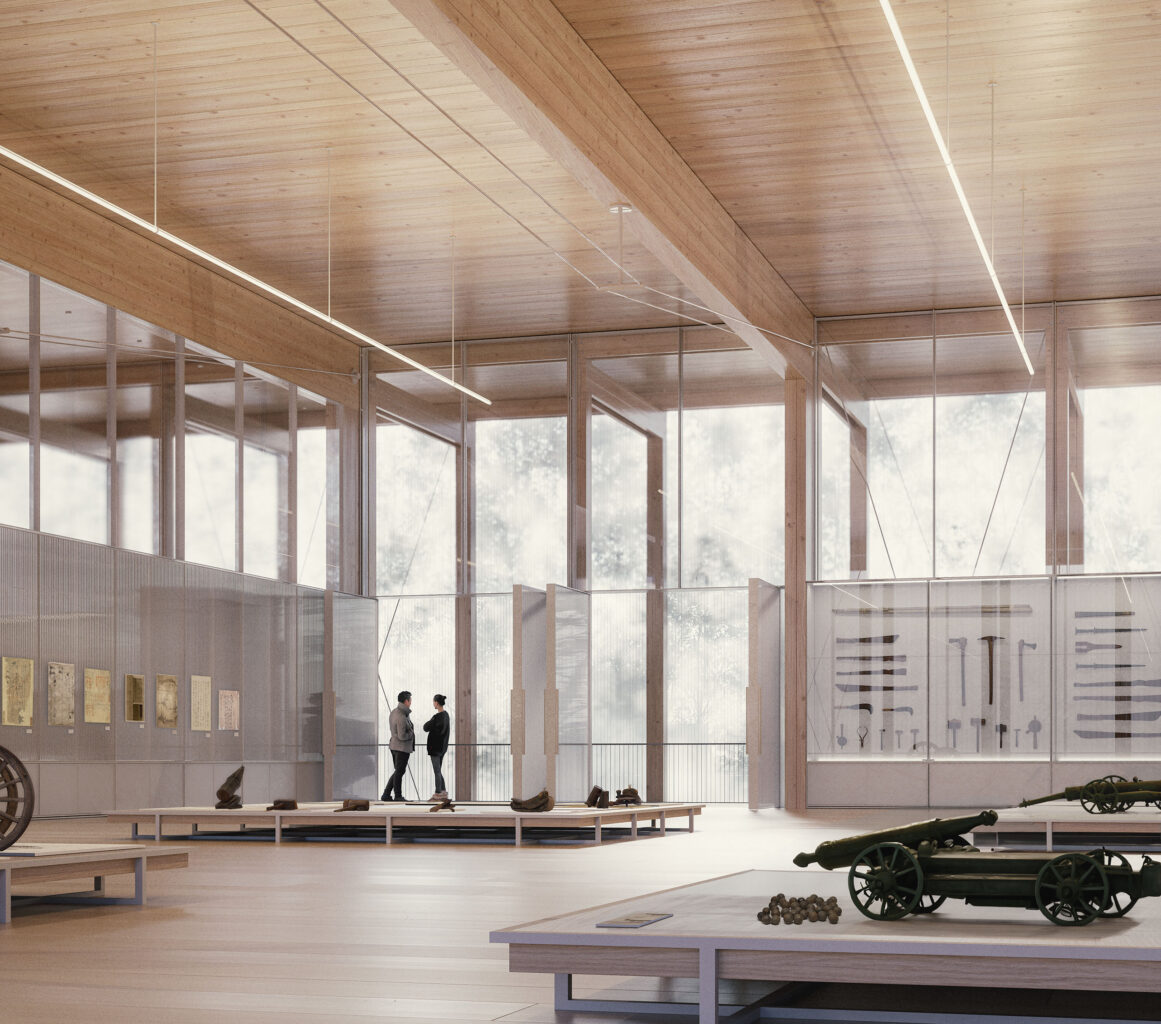
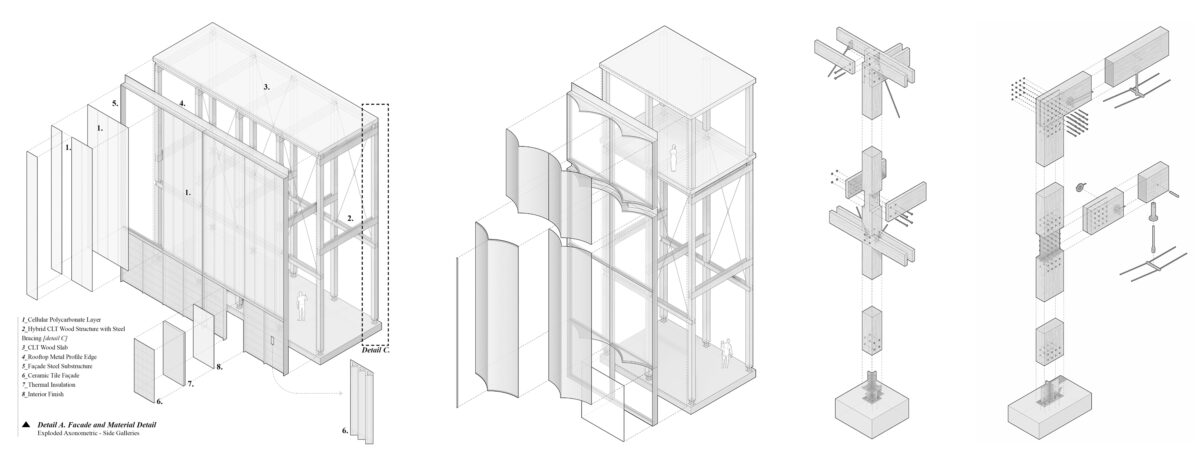
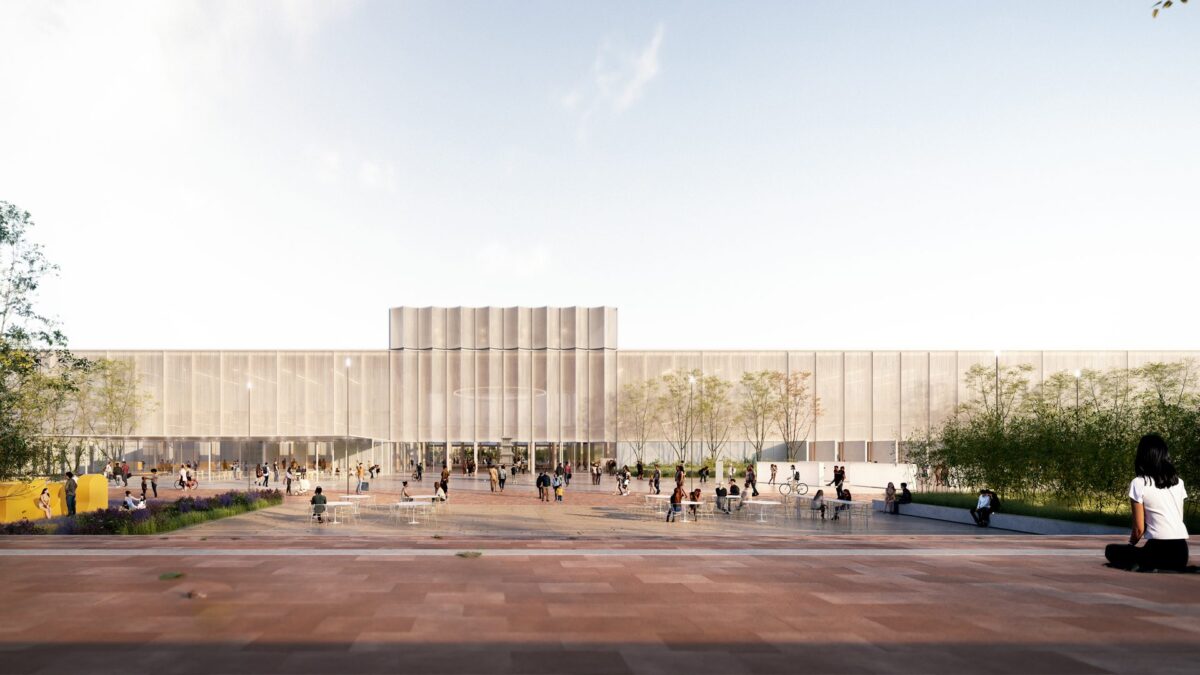
Project Team
- Luis Collado
- Jose Luis de la Fuente
- Ignacio Espigares
- Inés Fernández
- Changhoon Kim
- Luke McDonell
- Álvaro Mesquida
- Gonzalo Rojas
- Ana Sánchez Iza


